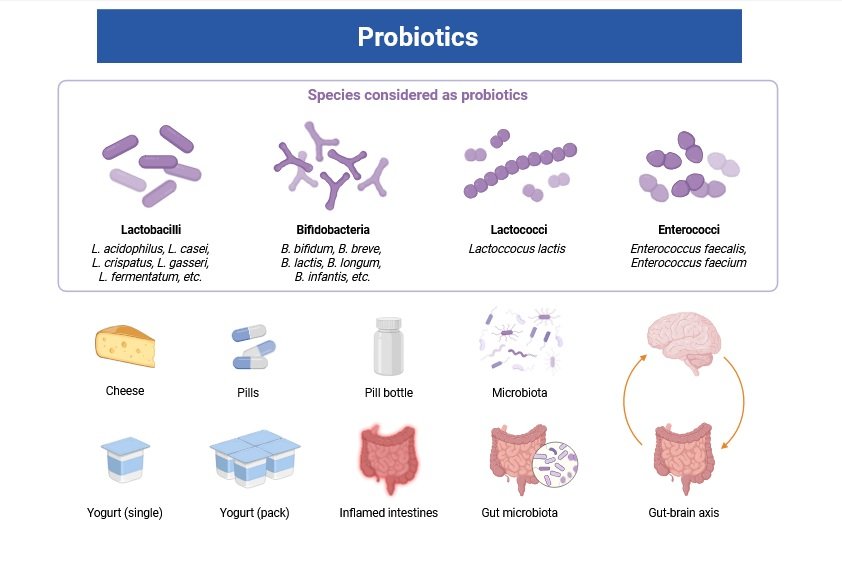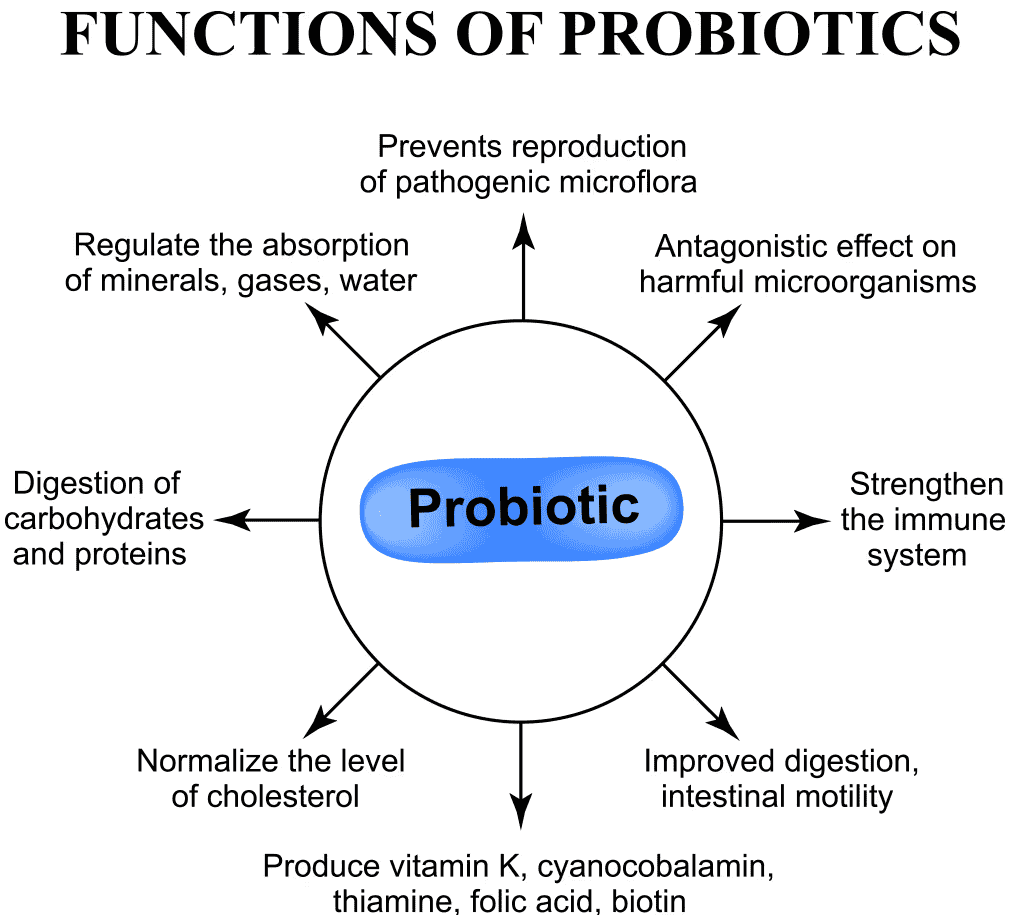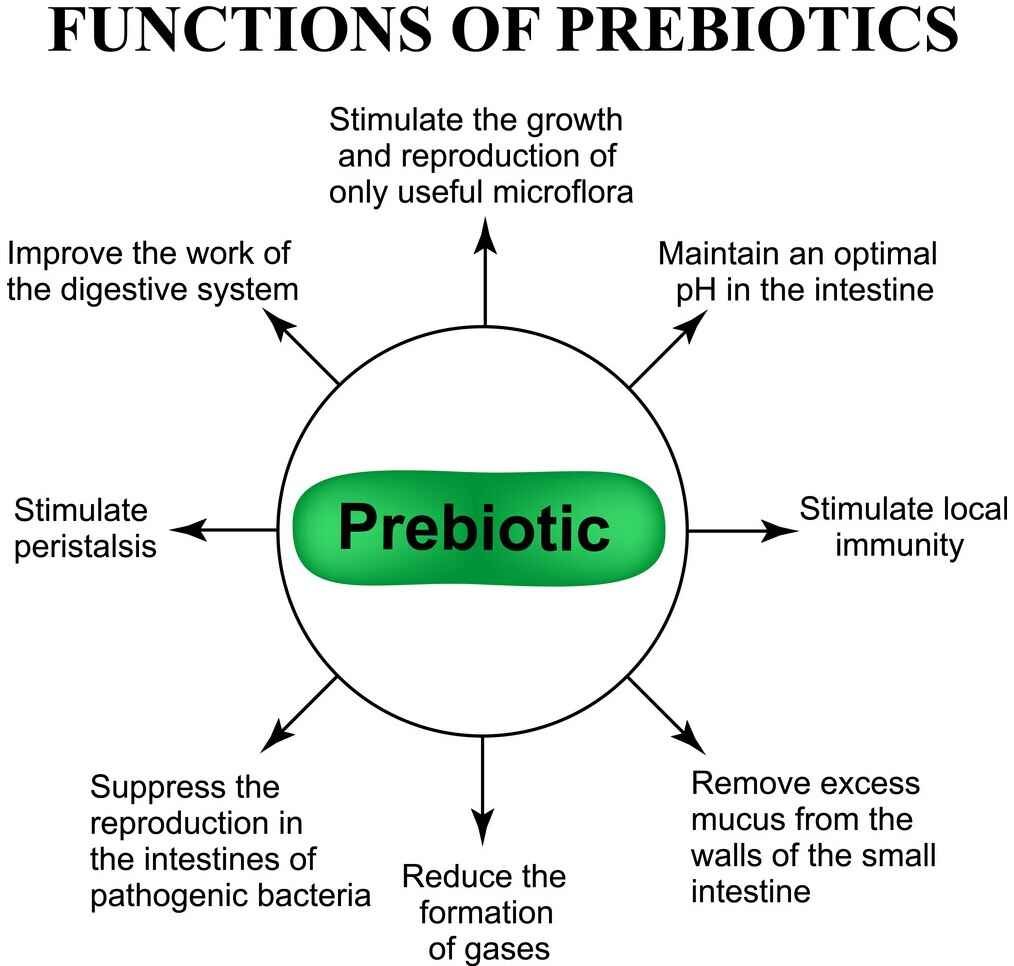Table of Contents
ToggleIntroduction
This article explains in detail the difference between probiotics and prebiotics, how they work, their sources, benefits, side effects, and how to include them in your diet effectively.
Gut health is one of the foundations of overall well-being, influencing digestion, immunity, mood, and even metabolism. Two terms that often appear together in discussions about gut health are probiotics and prebiotics. Although they sound similar, they play distinct yet complementary roles in maintaining a balanced gut microbiome.
Probiotics are live beneficial microorganisms that help maintain or restore healthy gut flora, while prebiotics are non-digestible food components that serve as nourishment for these beneficial microbes. Together, they form a powerful duo that supports optimal digestive and immune function.
What Are Probiotics?
Probiotics are live microorganisms, mainly beneficial bacteria and yeasts, that provide health benefits when consumed in adequate amounts. They are similar to the “good bacteria” naturally found in the human gut.
Common Probiotic Microorganisms:
- Lactobacillus species – found in yogurt and fermented milk.
- Bifidobacterium species – present in some dairy products.
- Saccharomyces boulardii – a probiotic yeast used in supplements.
- Streptococcus thermophilus and Lactococcus lactis – used in dairy fermentation.

How Probiotics Work?
Probiotics colonize the gut and:
- Restore microbial balance after antibiotic use.
- Compete with harmful microbes for nutrients and adhesion sites.
- Strengthen the gut barrier function.
- Regulate immune responses.
- Produce substances (like lactic acid) that inhibit pathogen growth.

Sources of Probiotics
- Yogurt and fermented milk
- Kefir (fermented milk drink)
- Sauerkraut and kimchi
- Miso and tempeh
- Kombucha (fermented tea)
- Probiotic supplements (capsules, powders, or tablets)
What Are Prebiotics?
Prebiotics are non-digestible fibers or carbohydrates that promote the growth and activity of beneficial gut bacteria. Unlike probiotics, prebiotics are not alive—they act as “food” for probiotics.
Common Prebiotic Substances:
- Inulin
- Fructooligosaccharides (FOS)
- Galactooligosaccharides (GOS)
- Resistant starch
How Prebiotics Work?
When consumed, prebiotics pass undigested through the upper gastrointestinal tract and reach the colon, where beneficial bacteria ferment them. This fermentation produces short-chain fatty acids (SCFAs) like butyrate, acetate, and propionate, which:
- Nourish colon cells
- Reduce inflammation
- Improve mineral absorption (especially calcium and magnesium)
- Support immune and metabolic health

Sources of Prebiotics
- Fruits: Bananas, apples
- Vegetables: Onions, garlic, asparagus, leeks
- Whole grains: Oats, barley, wheat bran
- Legumes: Beans, lentils, chickpeas
- Root vegetables: Chicory root, Jerusalem artichoke
Tabular Comparison of Probiotics and Prebiotics
| Feature | Probiotics | Prebiotics |
| Definition | Live beneficial microorganisms (bacteria or yeast) that provide health benefits when consumed. | Non-digestible food components (fibers or carbohydrates) that feed beneficial microbes in the gut. |
| Main Role / Mechanism | Add beneficial bacteria to the gut; improve microbial balance; inhibit harmful microbes. | Act as food for good bacteria; promote their growth and activity. |
| Examples of Microbes/Substances | Lactobacillus, Bifidobacterium, Saccharomyces boulardii | Inulin, FOS, GOS, resistant starch |
| Sources | Fermented foods (yogurt, kefir, kimchi, miso, sauerkraut), supplements | Fruits (bananas), vegetables (onions, garlic, asparagus), legumes, oats, whole grains |
| Benefits |
|
|
| How They Work Together | Add beneficial bacteria to the gut. | Feed those beneficial bacteria and help them multiply. |
| Side Effects | Usually mild (gas, bloating initially); may cause infections in immunocompromised individuals. | Generally safe; sudden large intake may cause gas or bloating. |
| Form | Found in fermented foods or supplements containing live cultures. | Found naturally in high-fiber plant foods or as fiber supplements. |
| Stability | Sensitive to heat and stomach acid. | Stable during cooking and digestion. |
| Use in Combination (Synbiotics) | Often combined with prebiotics in supplements to maximize benefits. | Enhance the growth of probiotics when taken together. |
Health Benefits of Probiotics and Prebiotics
Improved Digestive Health:
- Probiotics restore normal gut flora disrupted by illness or antibiotics.
- Prebiotics nourish beneficial bacteria and promote healthy bowel movements.
Enhanced Immune Function:
- Gut bacteria interact with immune cells to strengthen defense mechanisms.
- Regular intake of probiotics and prebiotics can reduce the risk of infections.
Mental Health Support:
The gut-brain axis links intestinal health with mood and cognition. Studies suggest that a balanced microbiome may help:
- Reduce anxiety and depression.
- Improve mood and cognitive function.
Better Metabolic and Heart Health:
- Certain probiotics and prebiotics improve cholesterol metabolism and insulin sensitivity.
- They may lower inflammation and help manage obesity-related disorders.
Skin Health:
- A healthy gut supports clearer skin by reducing systemic inflammation, potentially benefiting conditions like acne or eczema.
How to Incorporate Probiotics and Prebiotics into Your Diet
Daily Tips:
- Start your day with yogurt or kefir for live cultures.
- Add prebiotic-rich foods like bananas, garlic, or oats to meals.
- Combine both — e.g., yogurt topped with oats and fruits.
- Avoid overconsumption of processed foods that disrupt gut microbiota.
- Stay hydrated — water supports fiber fermentation.
Supplement Use:
If dietary intake is insufficient:
- Choose clinically tested probiotic supplements containing multiple strains.
- Look for prebiotic supplements (e.g., inulin powder) if fiber intake is low.
- Take them at different times of the day (some prefer probiotics before meals).

Possible Side Effects and Precautions
Probiotics:
- Mild digestive symptoms (bloating or gas) may occur during initial intake.
- People with compromised immune systems should consult a doctor before use.
Prebiotics:
- Rapid increase in fiber may cause bloating or discomfort.
- Gradually increase intake and drink plenty of fluids.
Combination of Probiotics and Prebiotics — Synbiotics
When probiotics and prebiotics are taken together, they form synbiotics.
This combination enhances the survival and activity of beneficial microbes in the gut.
For example:
- Yogurt (probiotics) + oats or bananas (prebiotics)
- Supplements containing both ingredients
Synbiotics can offer improved gut health, immunity, and nutrient absorption compared to taking either alone.
Conclusion
Both probiotics and prebiotics play crucial roles in supporting gut health, digestion, and immune function.
- Probiotics introduce beneficial microbes into the digestive system.
- Prebiotics serve as nourishment for these microbes, helping them thrive and maintain balance.
Including a variety of both in your diet through natural foods or supplements can promote a healthy microbiome, which in turn supports overall physical and mental well-being. The key is consistency, balance, and personalization—since everyone’s gut ecosystem is unique.
Frequently Asked Questions (FAQs)
Q1. Can I take probiotics and prebiotics together?
Yes. Taking them together (as synbiotics) enhances the growth and survival of beneficial microbes in the gut.
Q2. Are supplements better than food sources?
Natural foods are generally preferred, but supplements can be useful when dietary intake is inadequate or for targeted therapeutic use.
Q3. How long does it take to see benefits?
You may notice digestive improvements within a few days to weeks, but long-term benefits depend on consistent intake.
Q4. Can probiotics help with antibiotic-associated diarrhea?
Yes, probiotics like Lactobacillus rhamnosus and Saccharomyces boulardii are shown to reduce antibiotic-related diarrhea.
Q5. Are there risks in taking probiotics daily?
For healthy individuals, daily use is safe. Those with compromised immunity or serious illness should seek medical advice.
Also Read
- Antimicrobial Susceptibility Test (AST): Principle, Methods, Procedure, and Interpretation
- Plasmids: Structure, Types, Replication, and Applications
- Microbiology of Fermented Foods
- How Microbiology Helps in Vaccine Development: A Comprehensive Guide
- Homogenizer: Principle, Types, Parts, and Applications
- Importance of Microbiology: Applications, Scope, and Benefits
- Branches of Microbiology: An Overview of Key Fields
- What is Microbiology? History, Scopes & Applications
- Microbiology Experiments for Students: A Complete Guide
- Culture Staining Techniques in Microbiology: Types, Methods, and Applications
- Microbiology: From Microorganisms to Career Opportunities

